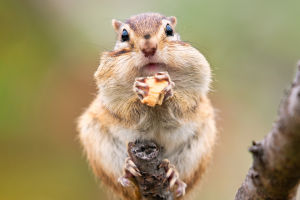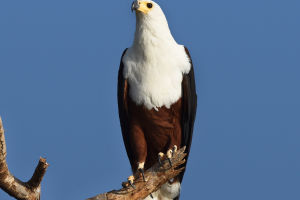Have you ever seen a chipmunk darting through the woods, its tiny body moving with incredible speed? These fascinating little creatures, also known as Tamias, are not only adorable but also play a vital role in their ecosystems.
In this article, we’ll dive into the world of chipmunks, exploring their behavior, habitat, diet, and why these small animals have such a significant impact on nature.
Eastern Chipmunk (Tamias striatus) - Foraging
video by Muuuh Nature & Wildlife Docum
What Are Chipmunks?
Chipmunks are small rodents that belong to the squirrel family. With their striped fur and small, agile bodies, they are easily recognizable and often seen in gardens, forests, and parks. There are about 25 species of chipmunks, with the Siberian chipmunk (Tamias sibiricus) being one of the most well-known. These animals are primarily found in North America, Europe, and parts of Asia, and they thrive in areas with plenty of vegetation, such as forests and woodland edges.
Habitat and Distribution
Chipmunks are adaptable creatures that can live in a variety of habitats. From lowland forests to mountainous areas, they tend to favor places where there are plenty of trees and shrubs for cover. They are excellent diggers, creating burrows in the ground where they can hide from predators and store food for the winter months. In the wild, chipmunks can be found in areas ranging from the northeastern parts of Europe and Asia to the western regions of North America.
Their burrows are usually located at the base of trees or in rock crevices, providing a safe and comfortable space for them to live. Chipmunks are active during the day and are known for their high energy, darting in and out of their burrows in search of food.
Chipmunk Behavior and Lifestyle
Chipmunks are primarily diurnal, meaning they are most active during the day. They spend their days foraging for food, playing, and digging in the soil. Chipmunks are known for their remarkable agility and quick movements. They can leap from branch to branch and climb trees with ease, using their strong claws for grip.
One of the most interesting aspects of chipmunk behavior is their food storage habits. Chipmunks are hoarders by nature, gathering large quantities of food and storing it in their burrows to ensure they have enough to eat during the colder months. They primarily feed on seeds, nuts, berries, and small insects. In the fall, chipmunks spend a lot of time collecting and stashing food in their burrows to prepare for winter. These stored food supplies can last them throughout the colder seasons when food is less abundant.
Diet and Feeding Habits
Chipmunks are omnivores, meaning they eat a variety of foods. Their diet consists mostly of seeds, nuts, fruits, and berries. They are particularly fond of acorns, which they gather in the fall and store for the winter. Chipmunks are also known to eat small insects, such as beetles and caterpillars, which provide them with additional protein.
Their habit of storing food in their burrows helps them survive the harsh winter months when food is scarce. They are meticulous in their food storage, ensuring that they have enough to last through the colder months. Interestingly, chipmunks have cheek pouches that they use to carry food back to their burrows, allowing them to gather more food in less time.
Importance in the Ecosystem
Despite their small size, chipmunks play an important role in the ecosystem. As they gather and store seeds, they help in seed dispersal, which is essential for the growth and regeneration of plants in their habitats. By spreading seeds across large areas, chipmunks contribute to the health of forests and other natural environments.
Chipmunks are also an important food source for many predators. Birds of prey, snakes, and larger mammals rely on chipmunks as a source of food, maintaining the balance of the ecosystem.
Conservation and Threats
While chipmunks are not currently considered endangered, they face threats from habitat loss, climate change, and predation. As human development expands into natural areas, the habitats of chipmunks are being destroyed, leaving them with fewer places to live and forage for food. Climate change also impacts their ability to find food and suitable nesting sites.
Fortunately, chipmunks are resilient creatures, and their populations remain stable in many regions. However, protecting their natural habitats and ensuring they have access to the resources they need is crucial for their long-term survival.
Final Thoughts on Chipmunks
Chipmunks may be small, but their impact on the environment is far from insignificant. From aiding in seed dispersal to being a crucial part of the food chain, these fascinating creatures help maintain the delicate balance of nature. By observing and understanding chipmunks, we can gain a greater appreciation for the important role they play in our ecosystems. So, next time you see a chipmunk dashing across your path, take a moment to admire its energy and resilience. These little creatures offer much to teach us about the natural world.
Thank you for reading, Lykkers! Have you ever had a memorable encounter with a chipmunk in the wild? Share your experiences with us!


